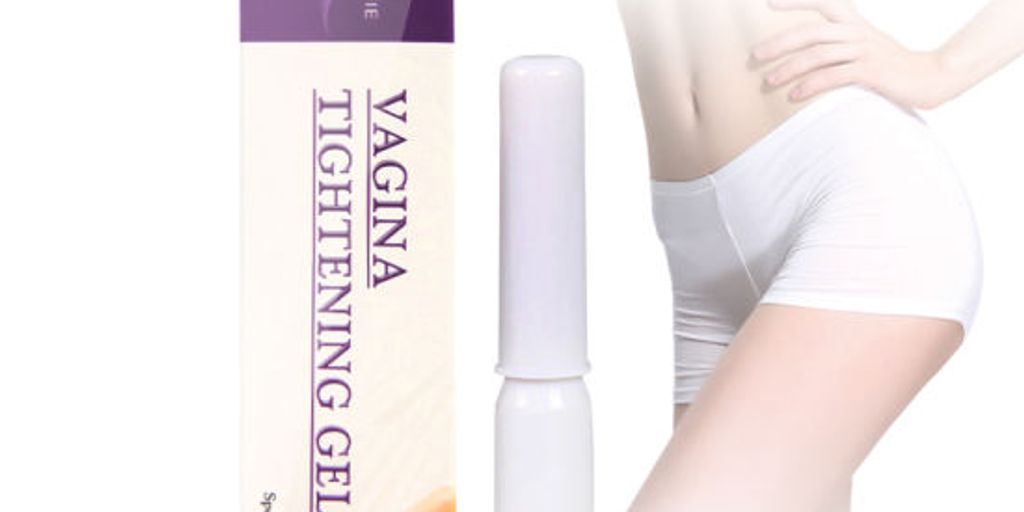Vaginal laxity is a topic that many women are curious about but might feel too embarrassed to discuss openly. This article will explore the causes, symptoms, and treatments for vaginal laxity, including medicines and natural alternatives. We’ll also cover what to ask your doctor and potential side effects. By the end, you’ll have a better understanding of your options and what to expect.
Key Takeaways
- Vaginal laxity can happen due to aging, childbirth, and other factors.
- There are different medicines available that claim to tighten the vagina.
- Natural alternatives like exercises and herbal remedies can also help.
- It’s important to talk to a healthcare provider before starting any treatment.
- Be aware of potential side effects and risks when considering vaginal tightening medicines.
Understanding Vaginal Laxity
Causes of Vaginal Laxity
Vaginal laxity, or the loosening of the vaginal walls, can happen for several reasons. Childbirth is one of the most common causes, as the process can stretch the vaginal tissues. Aging also plays a role, as the body’s natural collagen production decreases over time. Other factors include hormonal changes, especially during menopause, and certain medical conditions.
Symptoms and Impact on Quality of Life
Women experiencing vaginal laxity may notice a decrease in sexual satisfaction due to reduced friction. This condition can also lead to urinary incontinence and a feeling of heaviness in the pelvic area. These symptoms can significantly affect a woman’s quality of life, leading to emotional distress and a decrease in self-esteem.
Common Misconceptions
There are many myths surrounding vaginal laxity. One common misconception is that it only affects older women, but younger women can experience it too, especially after childbirth. Another myth is that it can be completely fixed with exercises alone. While pelvic floor exercises can help, they may not fully resolve the issue for everyone.
It’s important to understand that vaginal laxity is a common condition and can be managed with the right approach.
Overview of Vaginal Tightening Medicines
Types of Medicines Available
There are various types of vaginal tightening medicines available in the market. These include pills, creams, and gels. Each type has its own method of application and benefits. Pills are taken orally and work from within, while creams and gels are applied directly to the vaginal area.
How They Work
Vaginal tightening medicines work by stimulating the vaginal muscles and improving elasticity. This helps to tighten the vaginal walls. Some medicines also balance the pH levels, which can improve overall vaginal health. It’s important to follow the instructions for each product to achieve the best results.
Effectiveness and Safety
The effectiveness of these medicines can vary from person to person. Some women may see noticeable results within a few weeks, while others may take longer. It’s crucial to choose products that are safe and have been tested for quality. Always check for any potential side effects and consult with a healthcare provider if you have any concerns.
It’s essential to understand that while these medicines can help, they are not a permanent solution. Regular use and following the recommended guidelines are key to maintaining results.
Natural Alternatives to Vaginal Tightening Medicines
Herbal Remedies
Herbal remedies have been used for centuries to address various health issues, including vaginal laxity. Some popular herbs include aloe vera, witch hazel, and oak gall. These herbs are believed to have properties that can help tighten vaginal tissues. However, it’s important to consult with a healthcare provider before trying any herbal remedy.
Lifestyle Changes
Making certain lifestyle changes can also help improve vaginal tightness. Maintaining a healthy weight, eating a balanced diet, and avoiding smoking can all contribute to better vaginal health. Additionally, staying hydrated and practicing good hygiene are essential.
Exercises for Vaginal Tightening
Exercises like Kegels are well-known for their effectiveness in strengthening pelvic floor muscles. To perform Kegels, simply contract the muscles you use to stop urination, hold for a few seconds, and then release. Repeat this exercise several times a day. Other exercises, such as squats and pelvic tilts, can also be beneficial.
While natural alternatives can be effective, they may not work for everyone. It’s always best to consult with a healthcare provider to determine the most suitable approach for your needs.
Consulting Healthcare Providers
When to Seek Medical Advice
If you’re considering vaginal tightening treatments, it’s important to know when to seek medical advice. Consult a healthcare provider if you experience symptoms like discomfort, dryness, or changes in sensation. These could be signs that you need professional help.
Questions to Ask Your Doctor
When you visit your doctor, come prepared with questions. Here are some you might consider:
- What are the different treatment options available?
- How effective are these treatments?
- What are the potential side effects?
- How long will the results last?
- Are there any natural alternatives?
Preparing for Your Appointment
Before your appointment, gather any relevant medical records and make a list of your symptoms. This will help your doctor understand your situation better. Also, write down any medications or supplements you are currently taking. Being well-prepared can make your consultation more effective.
Taking the time to prepare for your appointment can make a big difference in the quality of care you receive.
Potential Side Effects and Risks
Common Side Effects
When using vaginal tightening medicines, some common side effects may occur. These can include:
- Mild irritation or itching
- Redness or swelling
- Temporary discomfort
It’s important to note that these side effects are usually temporary and may go away on their own.
Long-term Risks
While many vaginal tightening medicines are considered safe, there are potential long-term risks to be aware of. Prolonged use of these products might lead to:
- Chronic irritation
- Changes in vaginal flora
- Increased risk of infections
Managing Adverse Reactions
If you experience any adverse reactions, it’s crucial to manage them promptly. Here are some steps you can take:
- Stop using the product immediately.
- Rinse the affected area with water.
- Apply a soothing cream if needed.
- Consult a healthcare provider if symptoms persist.
Always listen to your body and seek medical advice if something doesn’t feel right. Your health and well-being should always come first.
Real-life Experiences and Testimonials
Success Stories
Many women have shared their positive experiences with vaginal tightening medicines. For instance, some users of V-Tight Gel have reported noticeable improvements in tightness and overall satisfaction. Similarly, those who tried Isosensuals Tight and Major Curves Vaginal Tightening Pills have also seen good results. These products have helped women regain confidence and improve their intimate relationships.
Challenges Faced
Despite the success stories, some women have faced challenges. A few users experienced mild side effects like irritation or discomfort. Others found that the results were not as long-lasting as they had hoped. It’s important to remember that individual experiences can vary, and what works for one person might not work for another.
Expert Opinions
Healthcare professionals emphasize the importance of consulting a doctor before starting any treatment. They highlight that while these products can be effective, they are not a one-size-fits-all solution. Experts recommend considering all options, including natural remedies and lifestyle changes, before deciding on a treatment plan.
It’s crucial to approach vaginal tightening treatments with realistic expectations and to prioritize your health and well-being above all else.
Future Trends in Vaginal Tightening Treatments
Innovative Medicines in Development
The field of vaginal tightening treatments is rapidly evolving with new medicines being developed. Researchers are focusing on creating more effective and safer options. These innovative medicines aim to provide better results with fewer side effects.
Technological Advancements
Technological advancements are playing a significant role in the development of vaginal tightening treatments. New devices and techniques are being introduced to enhance the effectiveness of these treatments. For example, laser and radiofrequency technologies are being used to stimulate collagen production and improve vaginal tightness.
Research and Clinical Trials
Ongoing research and clinical trials are crucial for the development of new vaginal tightening treatments. These studies help to determine the safety and effectiveness of new medicines and technologies. Clinical trials also provide valuable insights into the long-term effects of these treatments.
The future of vaginal tightening treatments looks promising with continuous advancements in medicine and technology. Patients can look forward to more effective and safer options in the coming years.
The future of vaginal tightening treatments is looking bright with new and improved methods on the horizon. These advancements promise more comfort and better results for women seeking these treatments. Curious to learn more? Visit our website for the latest updates and expert advice.
Conclusion
In summary, understanding vaginal tightening medicines is important for anyone considering them. These treatments can offer benefits, but it’s crucial to know the facts and talk to a doctor before starting any new treatment. Always consider the possible side effects and make sure the choice is right for you. Remember, your health and well-being come first. Stay informed and make decisions that best suit your needs.
Frequently Asked Questions
What causes vaginal laxity?
Vaginal laxity can be caused by childbirth, aging, or hormonal changes. These factors can weaken the muscles and tissues in the vaginal area.
Are vaginal tightening medicines safe?
Most vaginal tightening medicines are considered safe when used as directed. However, it’s always best to consult with a healthcare provider before starting any new treatment.
How long does it take for vaginal tightening medicines to work?
The time it takes for vaginal tightening medicines to work can vary. Some people may see results in a few weeks, while for others, it might take a few months.
Can exercises help with vaginal tightening?
Yes, exercises like Kegels can help strengthen the muscles in the vaginal area, which can improve tightness over time.
What are the side effects of vaginal tightening medicines?
Common side effects may include mild irritation or discomfort. It’s important to read the instructions and talk to a doctor if you have any concerns.
When should I see a doctor about vaginal laxity?
If vaginal laxity is affecting your quality of life or causing discomfort, it’s a good idea to talk to a healthcare provider. They can help you find the best treatment options.











